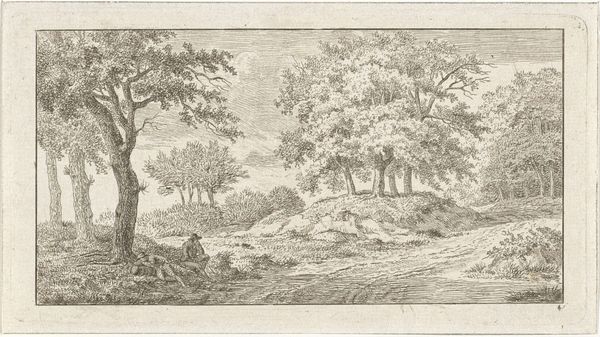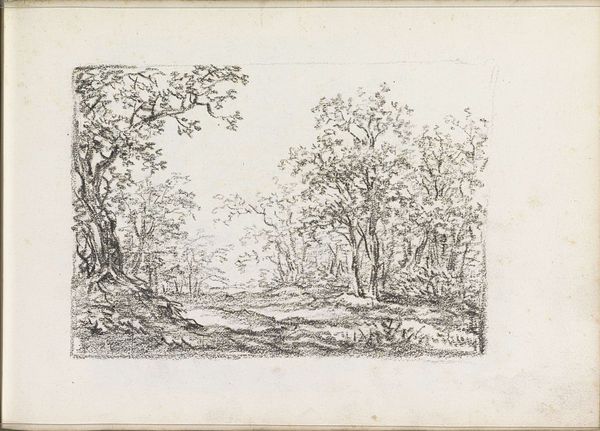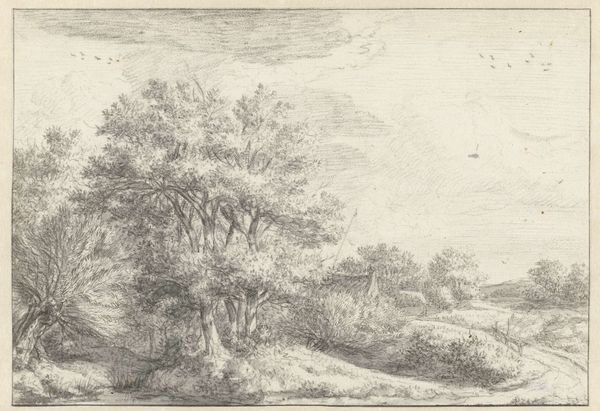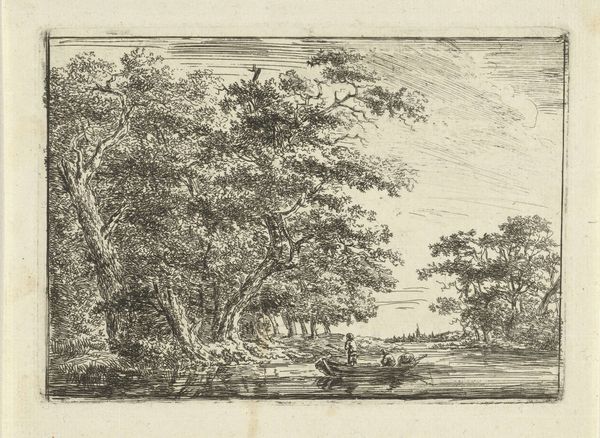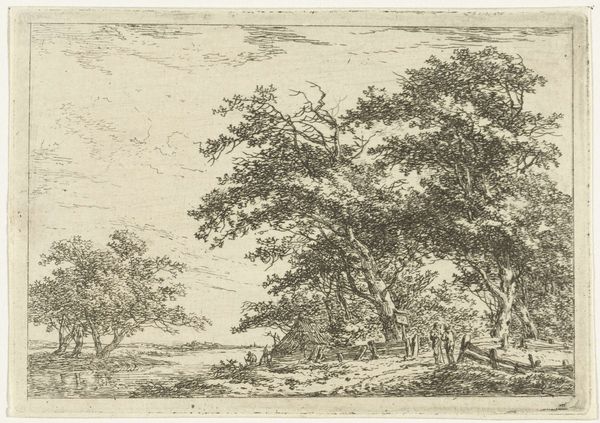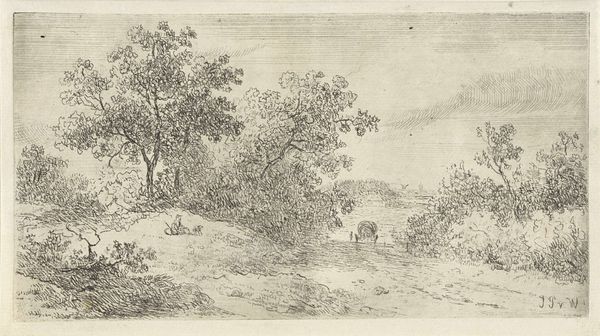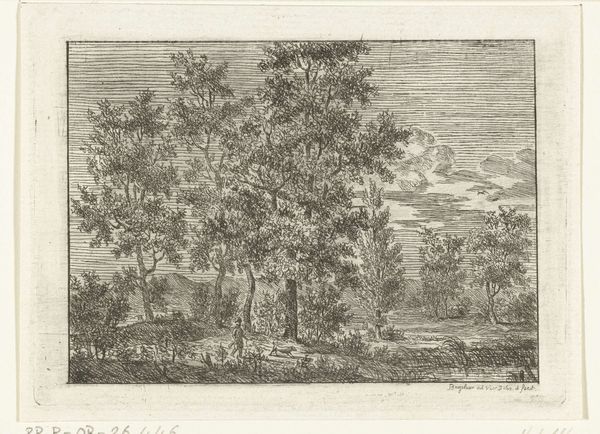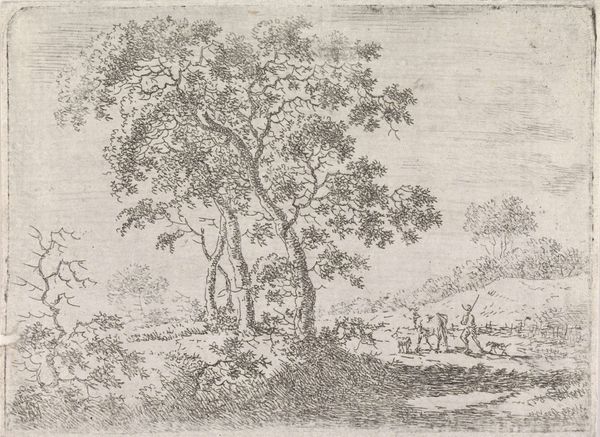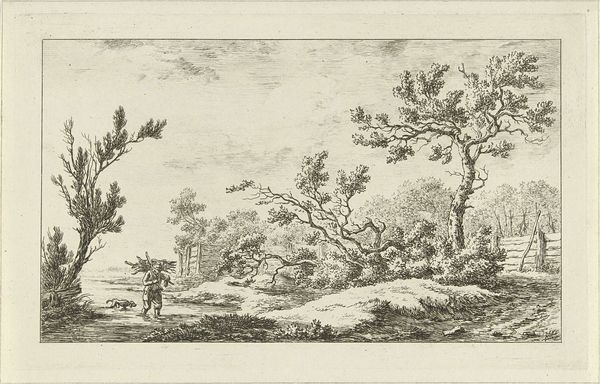
drawing, print, etching
#
drawing
# print
#
etching
#
landscape
#
realism
Dimensions: height 81 mm, width 147 mm
Copyright: Rijks Museum: Open Domain
Johan Christiaan Willem Safft made this landscape with a fisherman using etching, a printmaking technique that democratized image production. The incised lines are achieved by drawing through a wax ground on a metal plate, then exposing it to acid. The longer the plate sits in the acid, the deeper the lines. This gives the artist control over the image's gradations. To create an edition of prints, ink is applied to the plate, then wiped off the surface, remaining only in the etched lines. The plate is pressed onto paper, transferring the image. Here, the fineness of the etched lines lends itself to detailed depictions of foliage, creating a tranquil, idealized scene. The repetitive, skilled labor involved in producing each print meant such images could be widely distributed, shaping popular taste and ideas about the natural world. Understanding the processes and material base of printmaking allows us to think more deeply about the image’s cultural impact at the time.
Comments
No comments
Be the first to comment and join the conversation on the ultimate creative platform.

